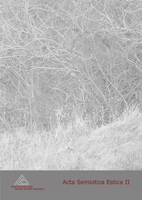Kihnu kört semiootika objektina
Kihnu Skirt as an Object of Semiotics
Author(s): Kristi JõesteSubject(s): Semiotics / Semiology
Published by: Eesti Semiootika Selts
Keywords: Kihnu skirt; ethnosemiotics; syntactics; semantics; pragmatics; kihnu kört; etnosemiootika; süntaktika; semantika; pragmaatika
Summary/Abstract: The article consists of two parts: the first part briefly introduces ethnosemiotics as a not very well known discipline in Estonia; the second part analyzes the paradigm of Kihnu skirts (kihnu kört), the traditional clothing that is still used by Kihnu women. Ethnosemiotics is a special domain of social and/or cultural semiotics which deals with sign systems and their functions from the viewpoint of ethnographic approaches. The analysis of Kihnu skirts is based upon the basic views of American semiotician Charles Morris (1901-1979) who in retrospect has been considered one of the founders of ethnosemiotics. According to his viewpoint it should be possible to reconstruct syntactical, semantical, and pragmatical dimensions in every semiotic object. Syntactics: in the present context we can talk about how Kihnu skirts are combined with other items of clothing, and also about how the stripes of each skirt are combined to express a certain meaning to the inteipreter. Semantics: in the case of Kihnu skirts this dimension is expressed in colour symbolics. Pragmatics: one skirt can have different meanings, depending on the context. Nowadays there are 5 kinds of skirts that are used in Kihnu island, and at first it seemed reasonable to examine them in the context of the above-mentioned dimensions. According to Morris, syntactics, semantics and pragmatics are three inseparable qualities of one phenomenon that can be isolated only in theory. However, by the end of the article it became clear that in the case of Kihnu skirts such distinction is artificial even theoretically, especially in the case of semantics and pragmatics. The meanings of the skirts that are expressed by colour symbolics do not exist apart from their users.
Journal: Acta Semiotica Estica
- Issue Year: 2005
- Issue No: 2
- Page Range: 169-183
- Page Count: 15
- Language: Estonian

